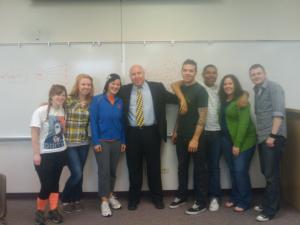Three years is a long time for a PR effort, but sometimes that’s what it takes, especially if the stakes are high. Alexander and Associates’ work for Alternate Energy Holdings Inc. paid off when the Payette County Planning and Zoning Commission recommended the county modify its comprehensive plan to allow AEHI to move forward on its plans or a nuclear power plant in that county. I’m pleased to say my term as head of PR for AEHI has produced success for this stage of the project. Dan Hamilton, a former KTRV Fox 12 newscaster, has taken the reins as head of the PR effort, and I know Dan will do a stellar job. I remain on as a consultant and fanatically committed to the project.
I first started helping AEHI in April 2007; the company’s chief goal in Idaho is to develop a nuclear power plant and CEO Don Gillispie has been highly persistent in the face of a difficult investment climate, setbacks and governmental delays. It was very heartening that the Payette P and Z last week voted 9 to 2 in favor, after a lengthy public hearing in November.
One of the two commissioners who voted against AEHI’s request said the company hadn’t submitted enough information to support its plans (several other commissioners correctly pointed out that, at this stage, AEHI had explained its plans sufficiently and it would have to submit highly detailed plans as it sought further approvals). This commissioner said the company appears to have “spent most of its money on public relations.” I take this as a backhanded compliment, but the use of public relations in this context, unfortunately, appears cynical.
In the past three years, I’ve visited close to 1,000 homes and businesses in three counties to pass out information, discuss our project and/or collect petition signatures in a half-dozen towns – decaying downtowns, strip malls, restaurants, pawn shops, secondhand stores, used car lots, smoky bars, neighborhoods, banks, machine shops, espresso stands, barber shops, corner stores, food assistance lines, subdivisions, trailer parks and office parks. In between this community organizing work, my company sent out news releases, arranged advertising, fielded media interviews, blogged, researched/wrote newsletters, attended local government meetings, recruited people to write letters to the editor and brought AEHI into the new frontiers of social media. AEHI CEO Don Gillispie spoke in front of chambers of commerce, service clubs and anyone else who would listen, while other members of the team did their respective parts. This is honest-to-goodness commitment and community outreach, not merely “public relations.”
We won this round because we put our faith in the majority of the people.
The Snake River Alliance fought us to a near-standstill in Elmore County, but in Payette County, I believe the P and Z was more inclined to listen to the testimony. Shortly before she cast a favorable vote, one Payette P and Z commissioner said testimony was about 81 percent in favor and that was something she had to pay attention to.
The Snake River Alliance’s approach to community organizing, as I have come to see it, is to find a few key people on their side, then work largely behind-the-scenes to assemble a small but influential coalition of opposition. That approach may work well in a community where the political culture gives a disproportionate amount of weight to a small but well-connected group. In such cases, hundreds of voices in support of a proposal may not be enough to overcome those few opposed.
In Payette County last week, we saw officials genuinely consider the wishes of the majority, especially when they themselves identify with those who want a better life for themselves and their neighbors. In that kind of climate, the Snake River Alliance will have to emerge from the shadows to do the grunt work of knocking on doors, networking with local businesses, approaching common people and offering something of value that will help struggling families put food on the table.
Wherever the AEHI proposal goes, I and many other people appreciate that the Payette County Commission gave a small company a fair chance to make something tremendous happen. Thank you and we will do right for your county.





Recent Comments